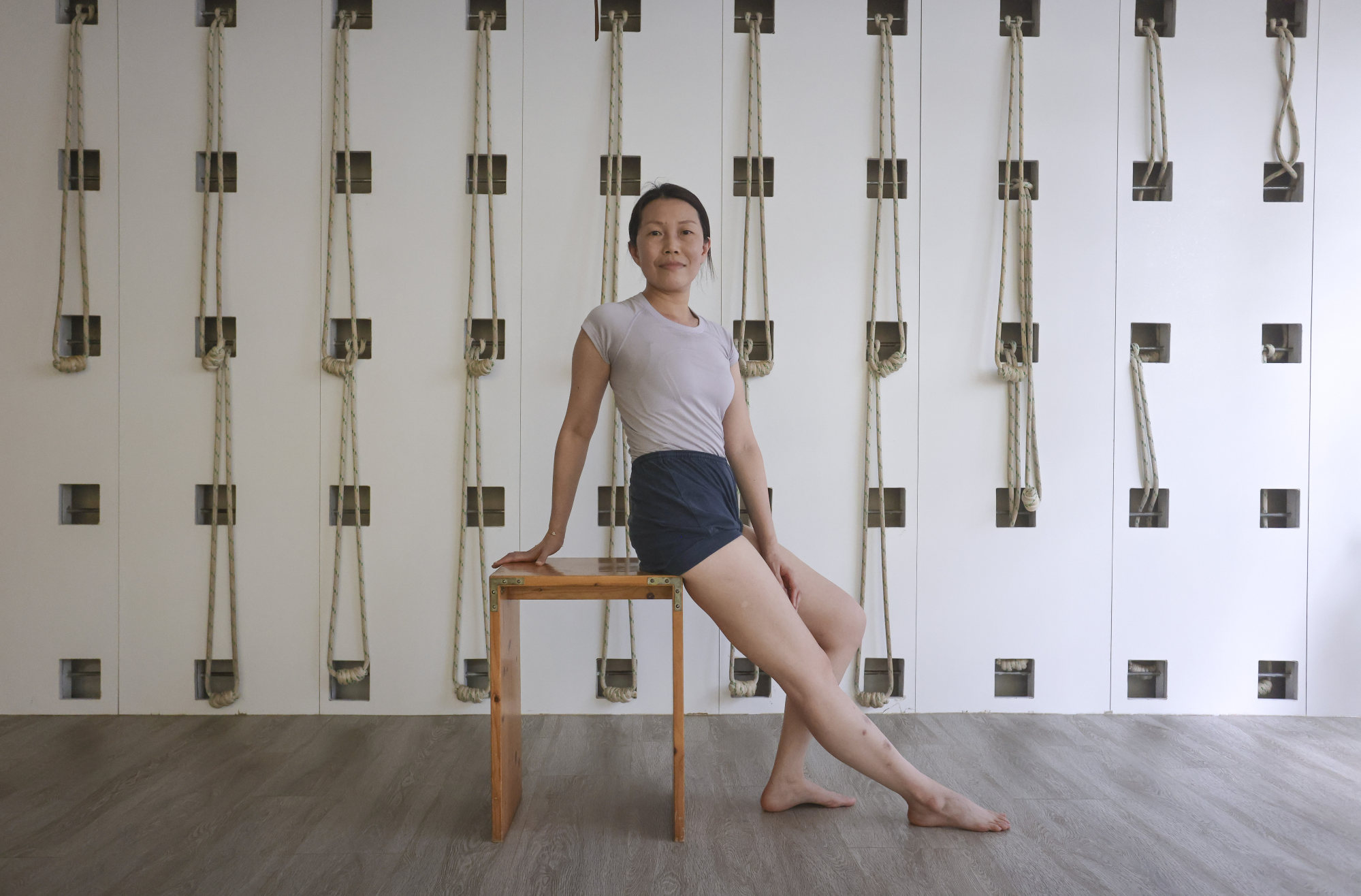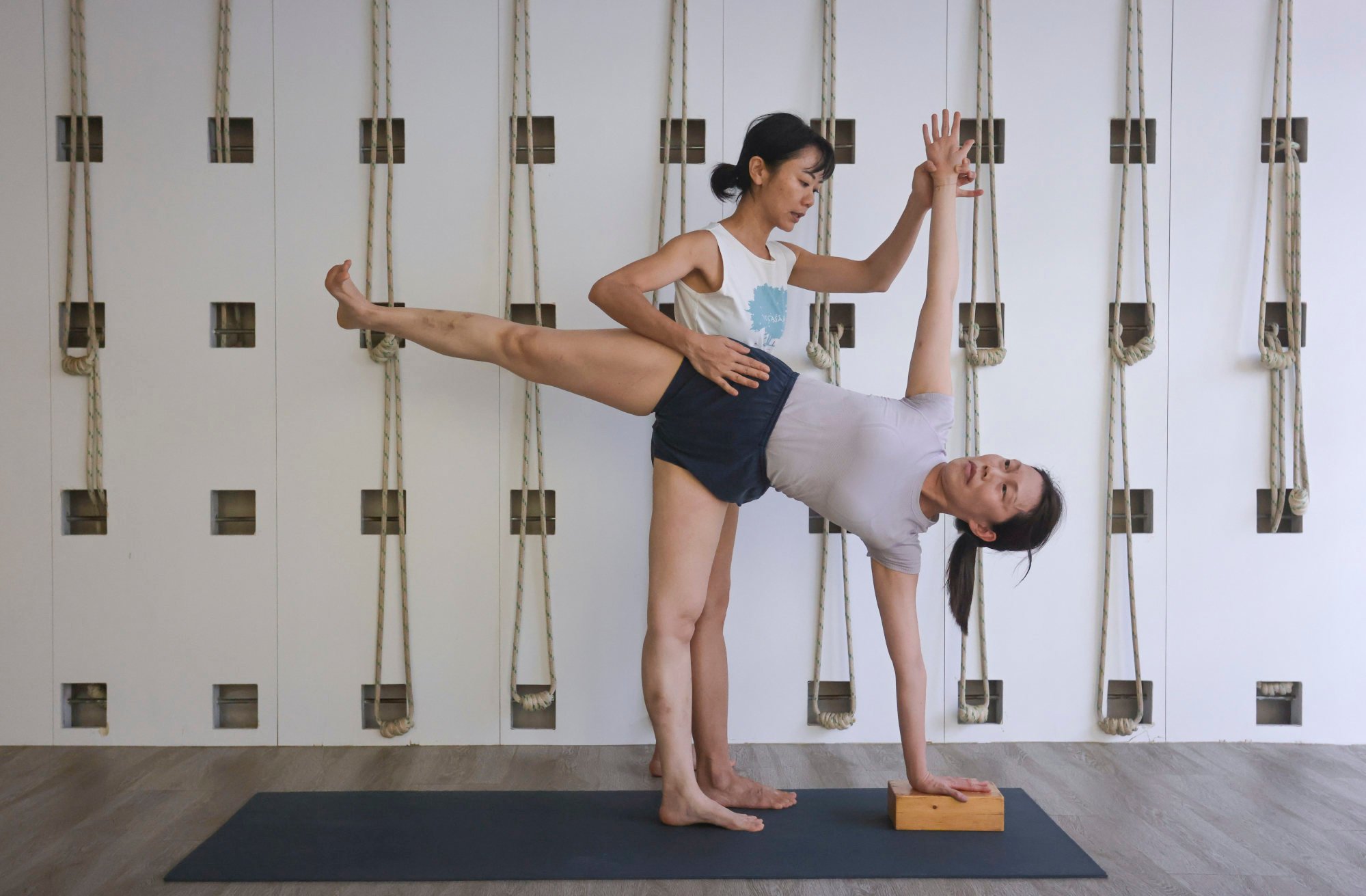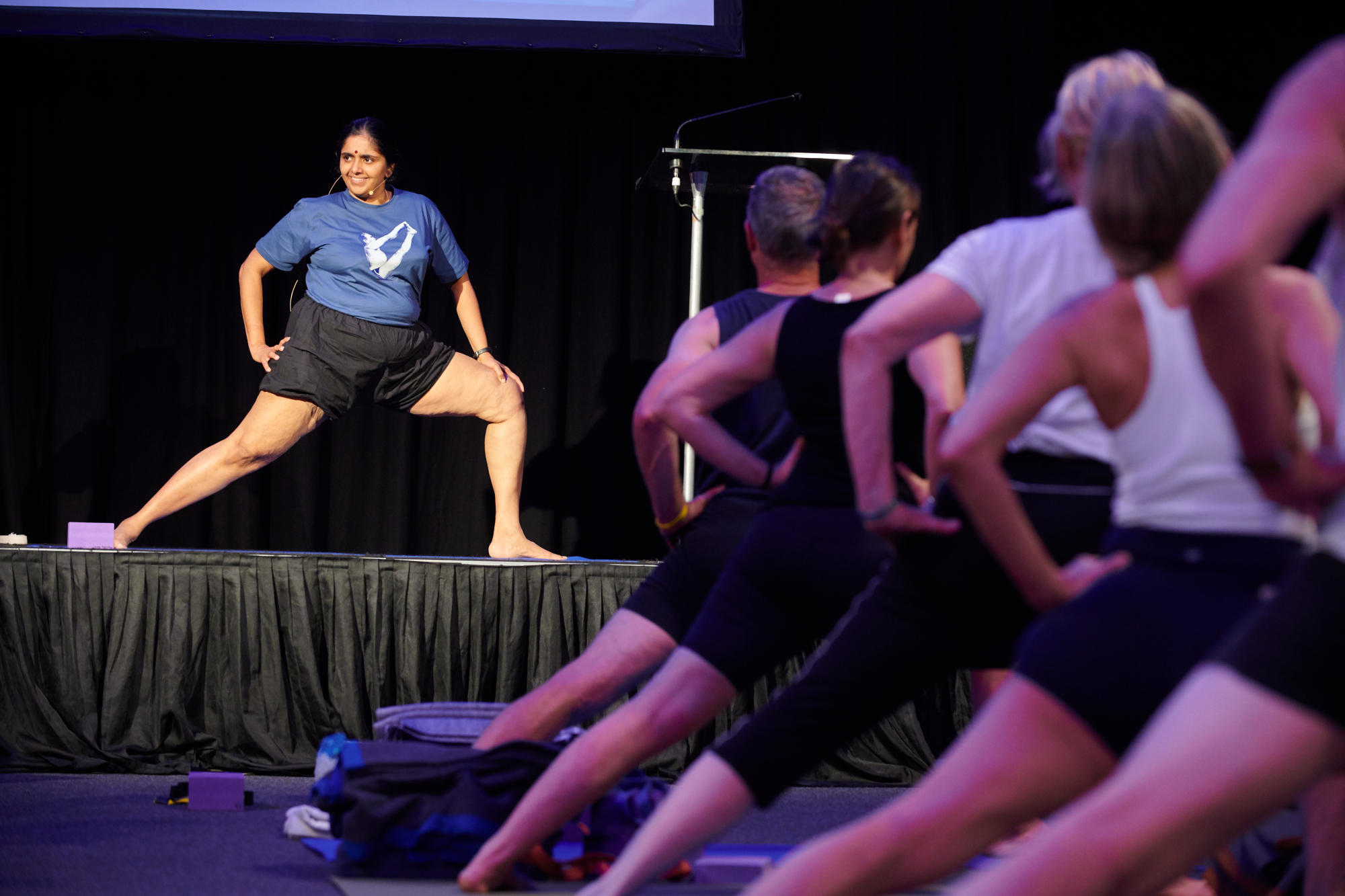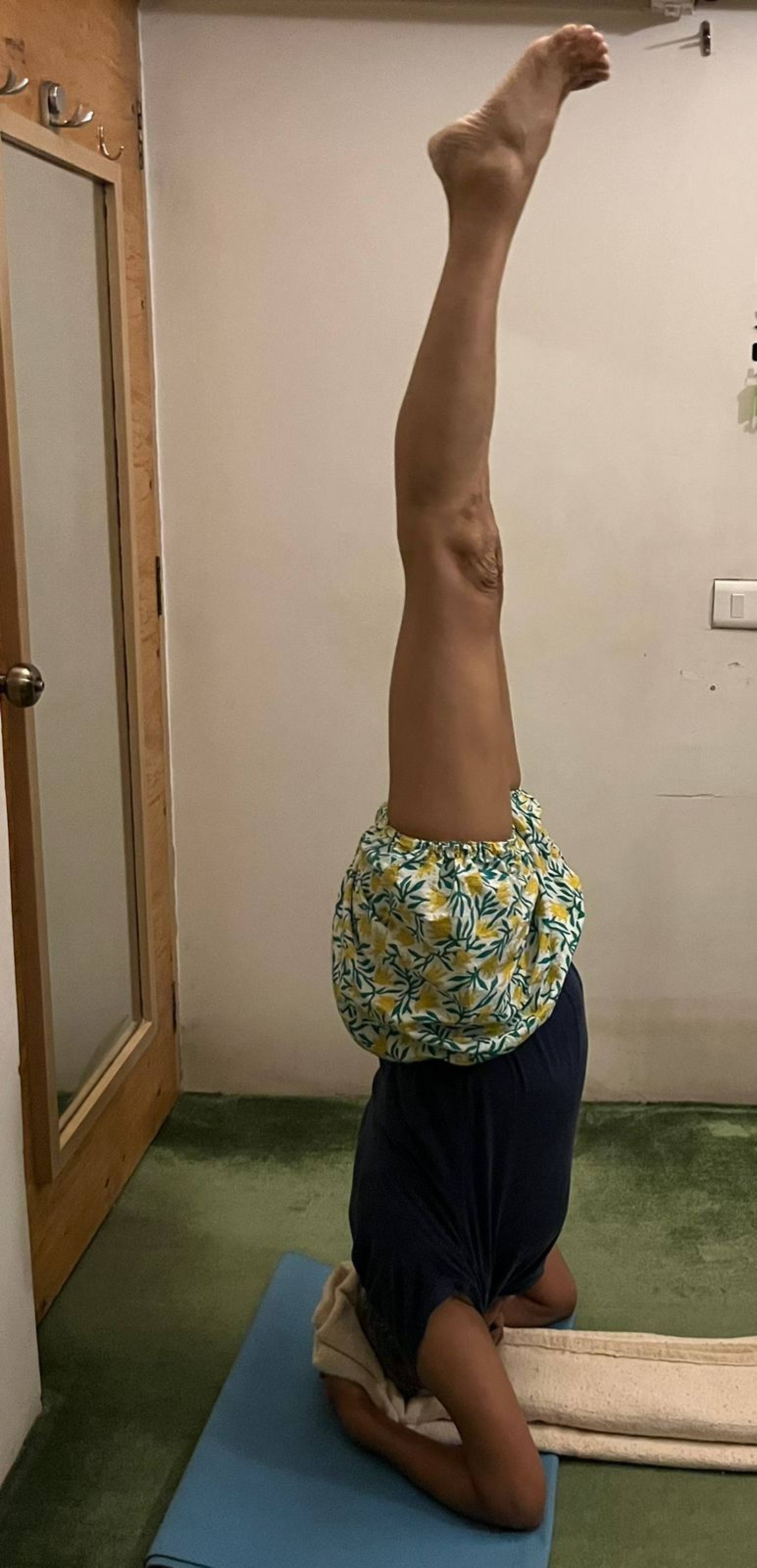
How Iyengar yoga helped three women overcome anxiety, depression, insomnia, PTSD and excruciating pain
- Iyengar yoga, founded by the late B.K.S. Iyengar, is designed to help people of all physical abilities and ages by employing tailor-made sequences of poses
- Three women share how Iyengar yoga helped them overcome serious physical and mental ailments, allowing them to stop taking strong medications
Cary Au-Yeung suffered from anxiety and insomnia. A busy corporate executive in Hong Kong, she spent long hours at work and travelled a lot. When her father fell ill in 2016, her stress levels soared.
“I barely slept three hours a night. I could not focus on work, felt exhausted and was anxious all the time,” says the 50-year-old, who also suffered from hot flushes and mood swings – side effects of menopause.
“I felt drained, physically and emotionally and was unable to attend school regularly,” says the now 21-year-old.

“I did not want to live,” says the marketing and brand consultant, now 64 years old.

Late Indian yoga master B.K.S. Iyengar is credited with spreading yoga across the world.
Iyengar’s central belief that yoga is for everyone led him to develop a system that allows people of all physical abilities and ages to practise yoga and reap its benefits.
From sleepless student to teacher
Au-Yeung started attending classes sporadically at Yogaśālā, an Iyengar yoga studio in Hong Kong, in 2009.
In 2016, she started practising a sequence designed for emotional stability that Iyengar described in his book Light on Life. The series of 15 asanas (poses) are designed to calm the mind and instil quietness in the body.

Her anxiety and insomnia are behind her, and she now teaches yoga while continuing with her corporate job.

“When we work on alignment in the asanas, it takes the mind away from its habituated patterns, and the focus shifts to the body and the breath in the present moment.
“The key to healing is to experience being in the ‘now’. The mind becomes quiet and alert, which enables the person to let go of stress,” Lee says.
Au-Yeung practised poses done lying on her back, standing, or with inversions, in which the heart is higher off the floor than the head.
Iyengar’s granddaughter keeps his legacy alive
In India, Desai took up yoga at her mother’s suggestion. She began attending the medical classes at the main Iyengar institute, the Ramamani Iyengar Memorial Yoga Institute (RIMYI) in Pune.
After a year of regular practice, she felt renewed. A few years later, she was off all medication and her blood reports were normal, surprising her doctors.
How Iyengar Yoga gave three people their lives back
Abhijata Iyengar, Iyengar’s granddaughter, leads the medical classes and has been teaching yoga at RIMYI for nearly two decades. She is the leading exponent of Iyengar yoga today.
She began studying aged 16, under the guidance of her grandfather, her aunt Geeta Iyengar and her uncle Prashant Iyengar.

Unlike a conventional class in which all students are led through the same sequence of poses, each student in the medical class has a sequence to address their condition, with experienced teachers guiding them.
“When Uttara joined the medical classes, we made her do supported forward bending asanas to soothe and soften the abdomen.
“Once she felt comfortable, we focused on inversions,” says Abhijata Iyengar, who has led popular yoga workshops around the world, and is in Hong Kong this week to conduct a six-day convention.

“Iyengar yoga is known for its emphasis on alignment, sequencing and timing, and it applies to therapy as well. Props (such as wooden bricks, belts and bolsters) are extensively used and make it possible for even those with severe physical limitations to enjoy the therapeutic benefits of the asanas,” she says.
“Each asana has its own unique pattern of blood and energy flow and is an energy circuit in itself. The proper placement of different parts of the body ensures that this flow is harmonious, and that dissipation of energy does not occur.”
Rebuilding mental and physical strength
Khaire’s father introduced her to Iyengar yoga when she was a teen, although she did not attend regularly. When she suffered from PTSD, she stopped – until she met Geeta Iyengar and described what she was going through.
At her suggestion, Khaire began attending the medical class daily, doing a prescribed sequence of standing poses, inversions and backbends.
“My depression gradually disappeared. I could not believe my transformation,” she says.

Regular practice enabled Khaire to rebuild her physical and emotional strength.
“I have a feeling of freshness the entire day. Despite long working hours, I don’t feel tired. Yoga has also helped me mentally. There is clarity in my thought, which is reflected in my work and my relationships.”
Khaire’s favourite poses are sirsasana, a headstand, and urdhva dhanurasana, the upwards-facing bow pose.
‘The doctors were surprised’: how Iyengar yoga helped breast cancer survivor
“Backbends helped me move forward from depression,” she says.
Au-Yeung, Desai and Khaire’s experiences show how regular yoga under the right guidance can heal the body and strengthen the mind.
Desai shares her favourite Iyengar quote: “Yoga teaches us to cure what need not be endured and endure what cannot be cured.”

